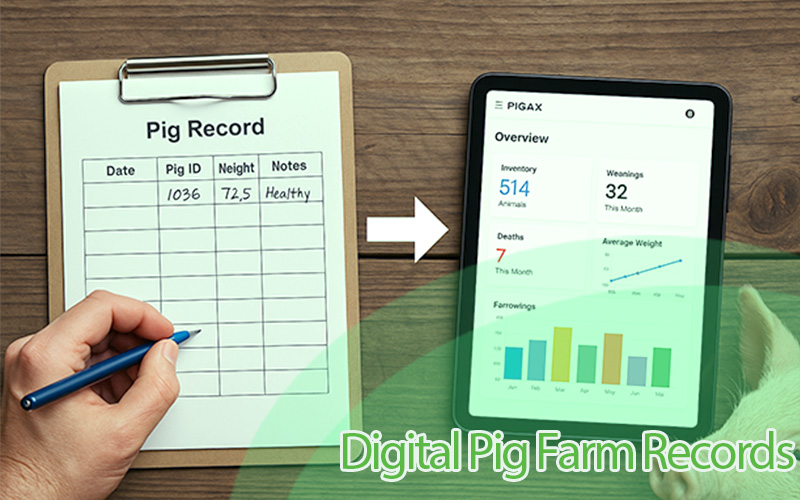Guide to selecting the best boar for breeding operations
Are you looking to enhance the breeding performance of your operations? The key lies in boar selection. Choosing the right boar is a critical decision that can have a profound impact on the success and profitability of your breeding program. From genetics to physical attributes and reproductive traits, a boar serves as the cornerstone of your breeding operations, influencing the genetic potential of future generations. By selecting a boar with exceptional genetic traits, you lay the foundation for improved breeding performance and the production of offspring with desirable traits.
10 Boar selection process checklist
Here are 10 key process you must execute when selecting a boar to ensure saucerful breeding
1. Assessing Genetic Potential
Evaluate the genetic background and performance records of potential boars to understand their lineage, strengths, and weaknesses. Genetics play a vital role in boar selection. The genetic potential of a boar determines the traits and characteristics that will be passed down to its offspring. Look for desired traits such as superior growth rate, efficient feed conversion, and excellent carcass quality.
II. Considering Growth Potential
Evaluating growth rate and weight gain potential helps determine the boar's ability to reach market weight efficiently. Assessing feed efficiency and body condition score ensures that boars can maintain proper body condition while meeting their growth targets. Striking the right balance between growth potential and reproductive performance is crucial for optimal breeding outcomes.
III. Evaluating Physical Conformation
Assess the body structure, ensuring it is well-balanced and muscular. Look for a boar with good bone structure and strong legs, as it indicates durability and longevity. Physical conformation is crucial in boars as it affects their overall soundness and breeding ability. Evaluate the reproductive organs for proper development and maturity, as this will impact the boar's ability to successfully breed.
IV. Assessing Reproductive Health
Conduct thorough health checks and screenings to ensure that the boar is free from any reproductive diseases or abnormalities. Reproductive health is paramount in boar selection. Consider the boar's reproductive history and evaluate its potential fertility. A healthy and fertile boar is essential for successful breeding and genetic improvement.
V. Analyzing Semen Quality
Evaluate the boar's semen for parameters such as sperm count, motility, and morphology. Semen quality is a critical factor to consider when selecting a boar. High-quality semen with good sperm characteristics is indicative of the boar's reproductive potential. Optimal semen quality is vital for achieving a high conception rate and successful breeding outcomes.
VI. Evaluating Libido and Mating Behavior
Assess the boar's libido, which refers to its sexual drive and desire to mate. Libido and mating behavior significantly impact boar sexual performance. A boar with high libido will exhibit vigorous mounting behavior and efficient serving capacity. Additionally, consider the boar's ability to detect and mate with sows in heat, as this ensures timely and successful breeding.
VII. Temperament and Handling
Assess the boar's docility, ease of handling, and adaptability to various environments. A calm and well-behaved boar is easier to manage during breeding activities, reducing stress for both the boar and the breeder. Temperament and handling characteristics are important considerations in boar selection. Minimizing stress is crucial for optimal breeding performance.
VIII. Considering Long-Term Productivity
Evaluate the potential for long-term productivity and longevity in boars. Consider the boar's impact on breeding herd performance. Assess litter size, farrowing rate, and the overall performance of the boar's offspring. A boar with a proven track record of consistently producing high-performing and healthy piglets is a valuable asset to your breeding program.
IX. Genetic Diversity and Inbreeding Avoidance
Avoid excessive inbreeding by selecting boars that are unrelated or distantly related to your existing breeding stock. Genetic variation promotes hybrid vigor and reduces the risk of genetic abnormalities. Strive for a genetically diverse herd to enhance overall productivity and longevity.
X. Consultation with Breeding Experts
Seek guidance and consultation from breeding experts, such as reputable swine genetic companies or consultants. These experts have in-depth knowledge and experience in boar selection and breeding programs. They can provide valuable insights and assist you in making informed decisions. Collaborating with experts ensures that you select the best boars to optimize breeding performance and genetic improvement in your operations.
Conclusion
Selecting the best boar for your breeding operations requires careful consideration of various factors. Genetic potential, physical conformation, reproductive health, semen quality, libido, temperament, long-term productivity, genetic diversity, and expert consultation are all crucial elements to evaluate. By prioritizing these considerations, you can enhance breeding performance and achieve genetic improvement within your swine herd. Make informed decisions when selecting boars, as they are the foundation of a successful breeding program.




